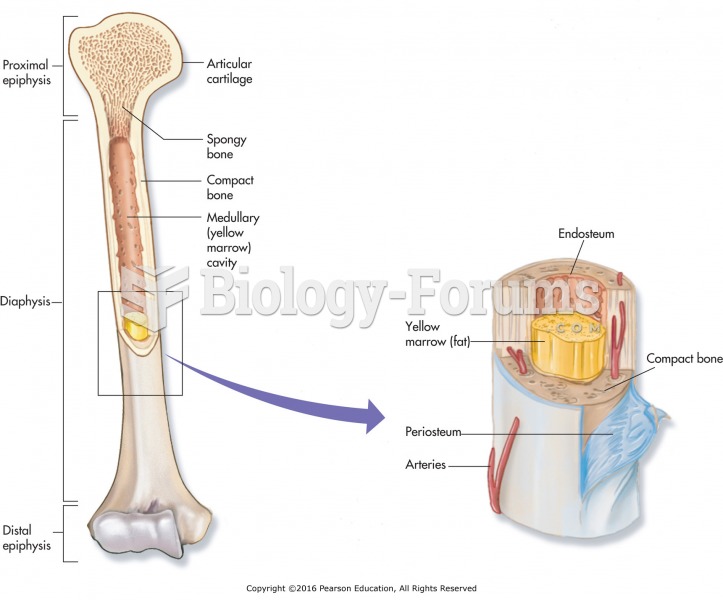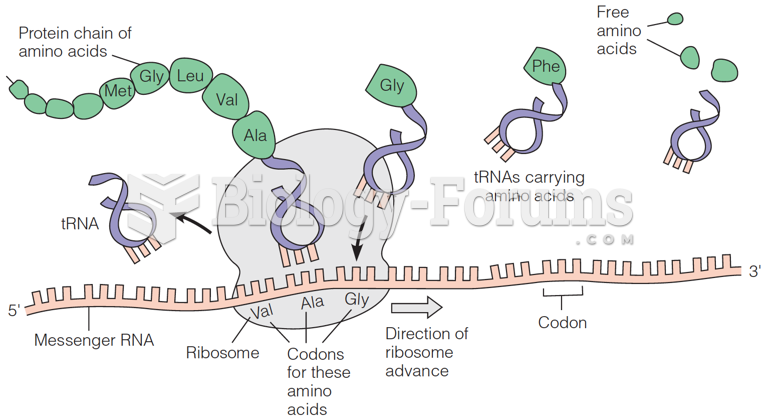|
|
|
According to research, pregnant women tend to eat more if carrying a baby boy. Male fetuses may secrete a chemical that stimulates their mothers to step up her energy intake.
Recent studies have shown that the number of medication errors increases in relation to the number of orders that are verified per pharmacist, per work shift.
Asthma cases in Americans are about 75% higher today than they were in 1980.
IgA antibodies protect body surfaces exposed to outside foreign substances. IgG antibodies are found in all body fluids. IgM antibodies are the first type of antibody made in response to an infection. IgE antibody levels are often high in people with allergies. IgD antibodies are found in tissues lining the abdomen and chest.
In most climates, 8 to 10 glasses of water per day is recommended for adults. The best indicator for adequate fluid intake is frequent, clear urination.
 Horses too young to be ridden are trained to accept a halter, taught basic skills, manners, and beco
Horses too young to be ridden are trained to accept a halter, taught basic skills, manners, and beco
 The footnote on a Nutrition Facts label explains the Recommended Daily Values that are the basis of ...
The footnote on a Nutrition Facts label explains the Recommended Daily Values that are the basis of ...





